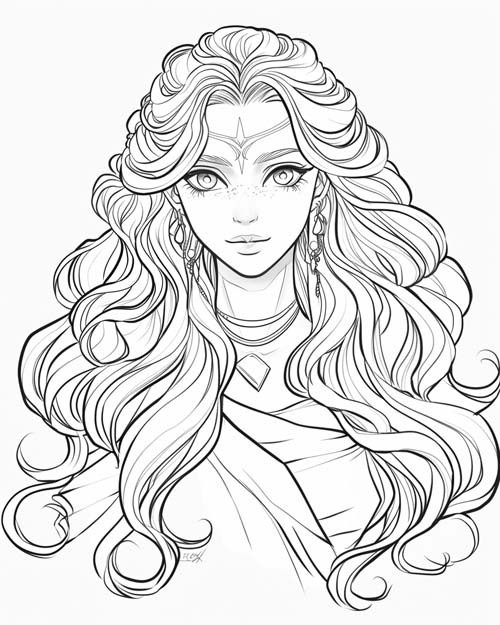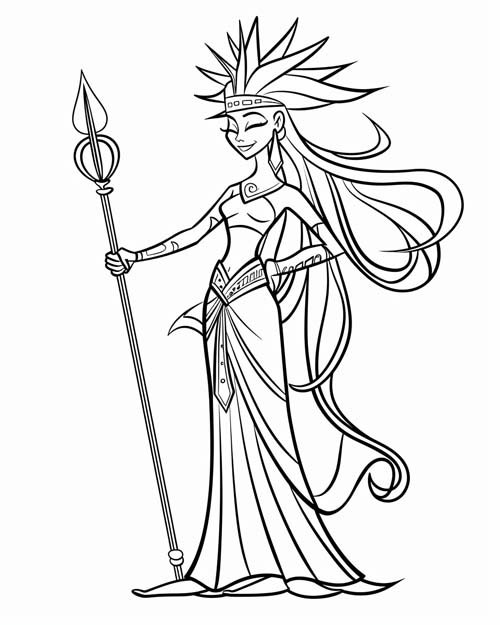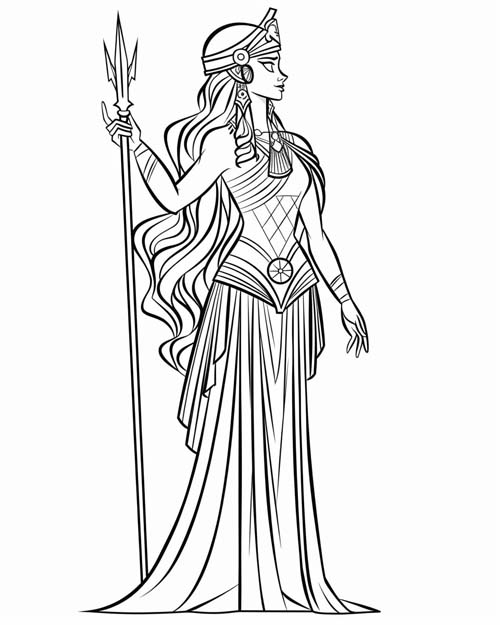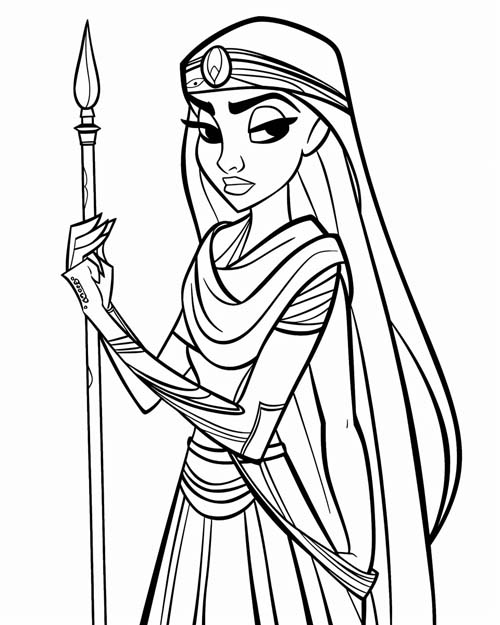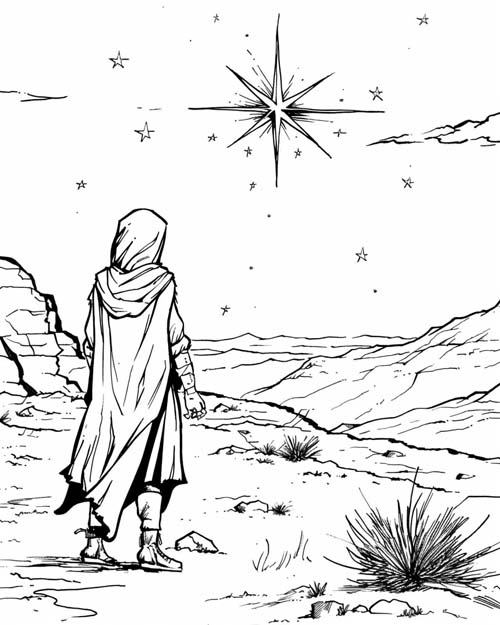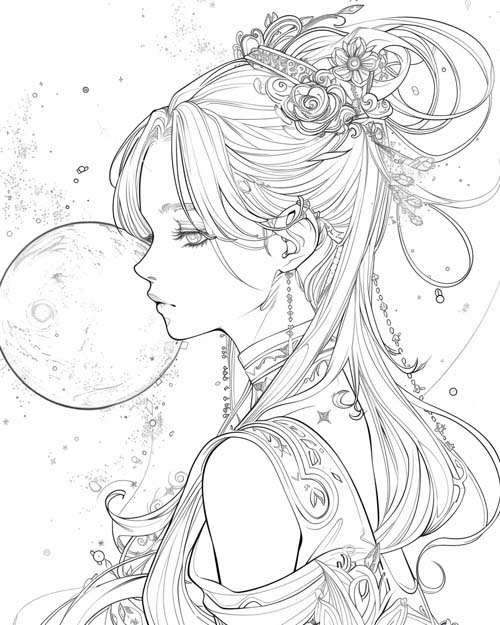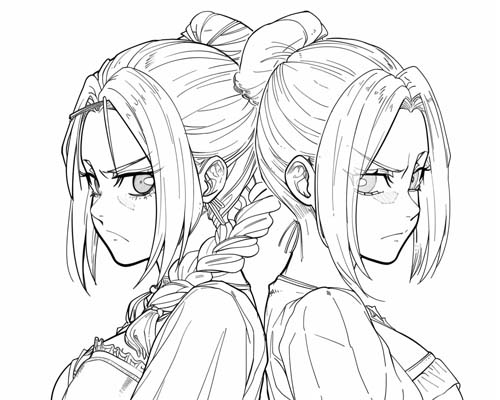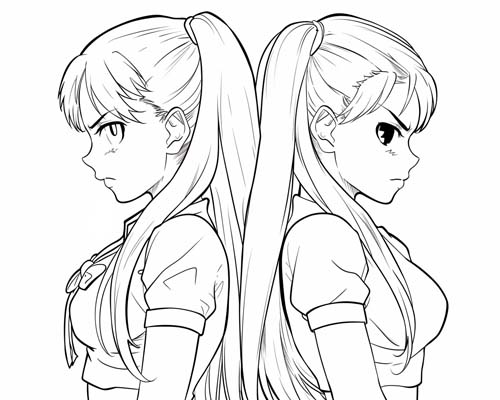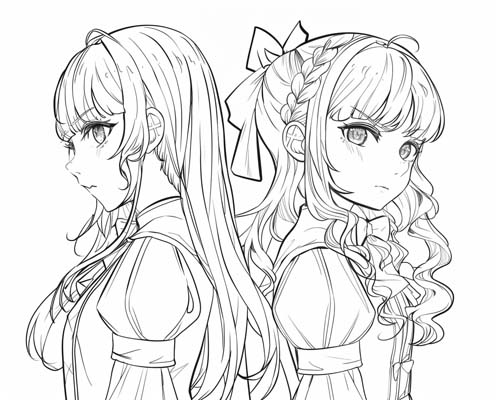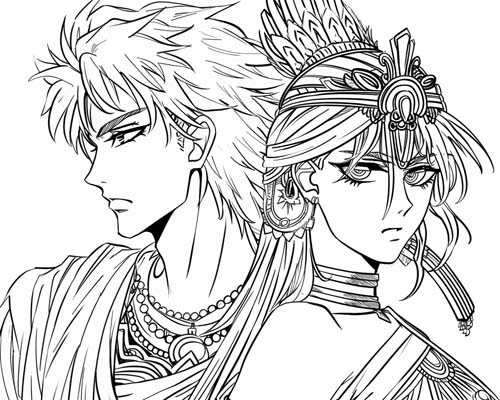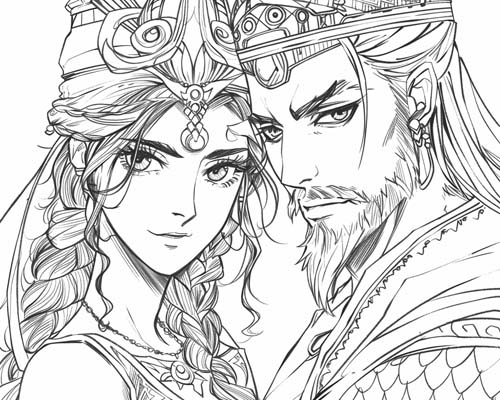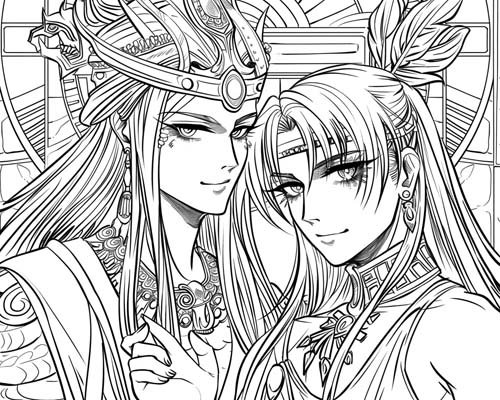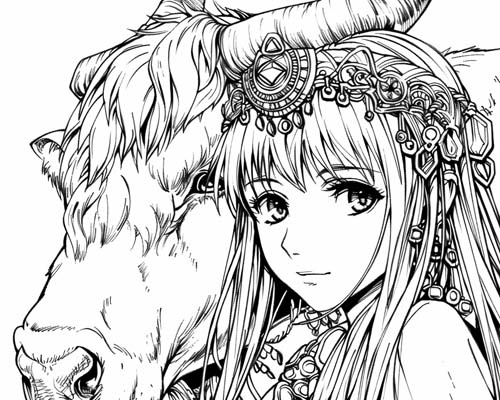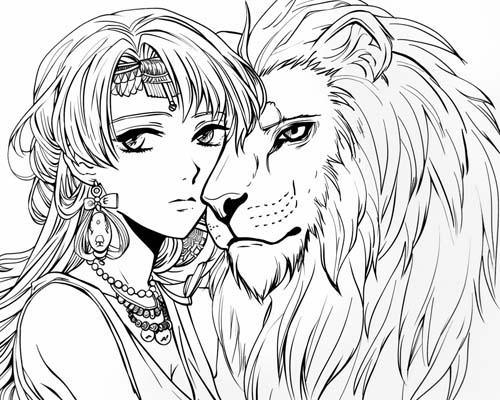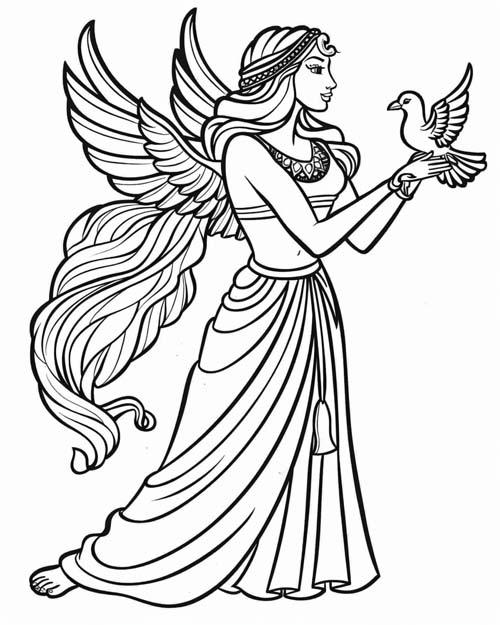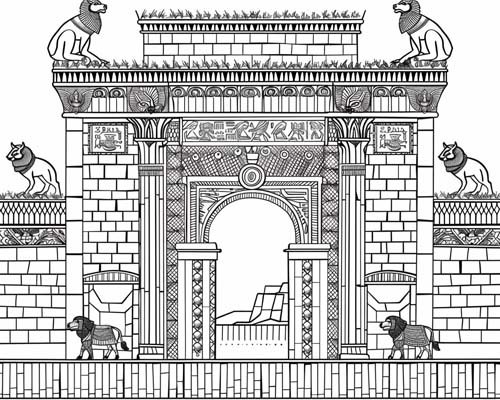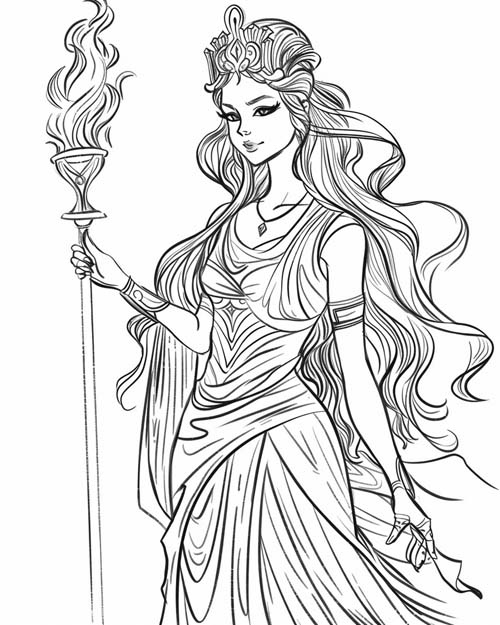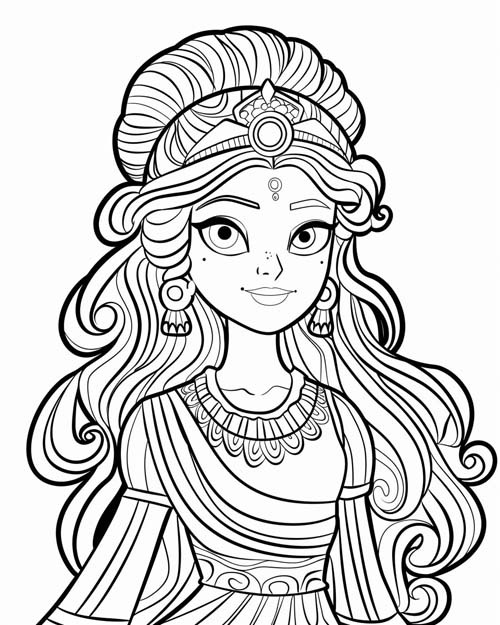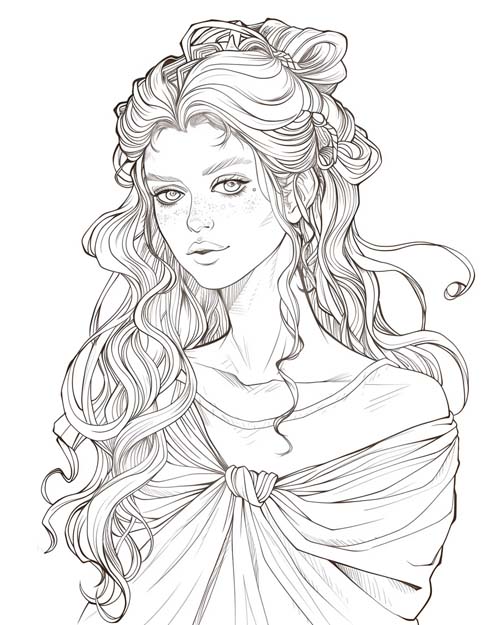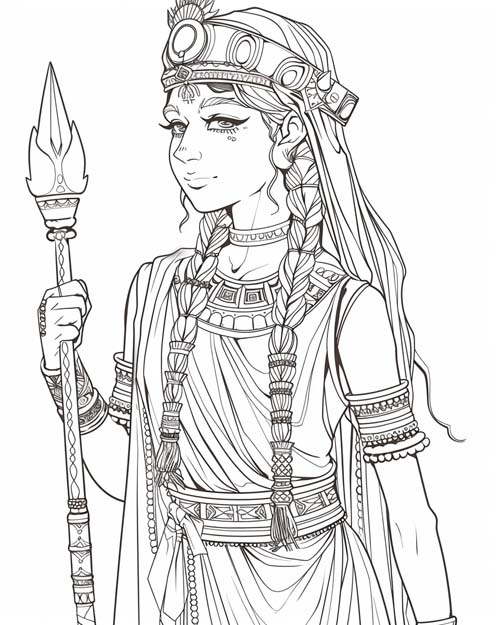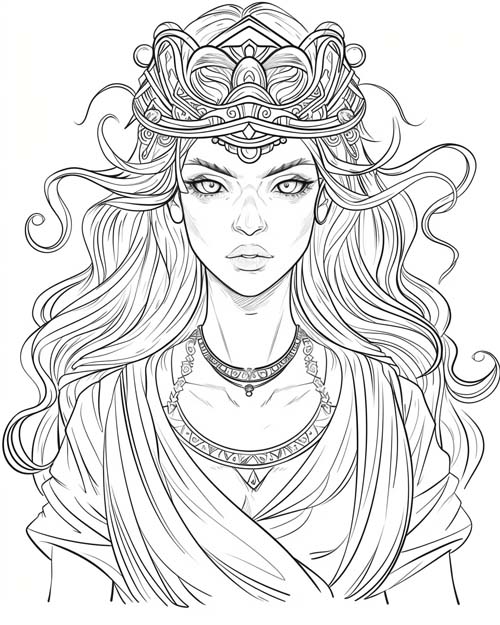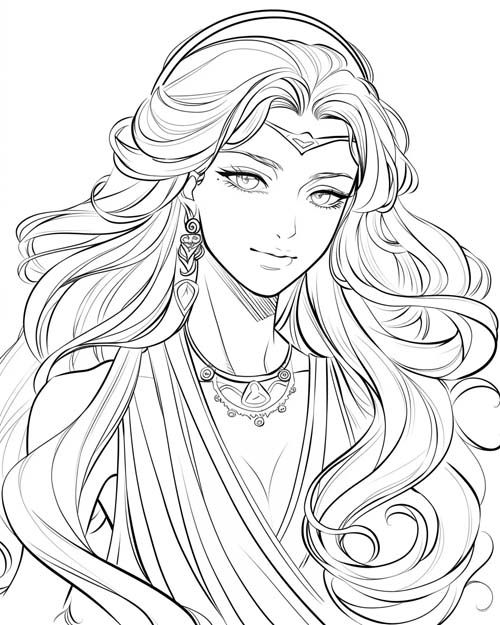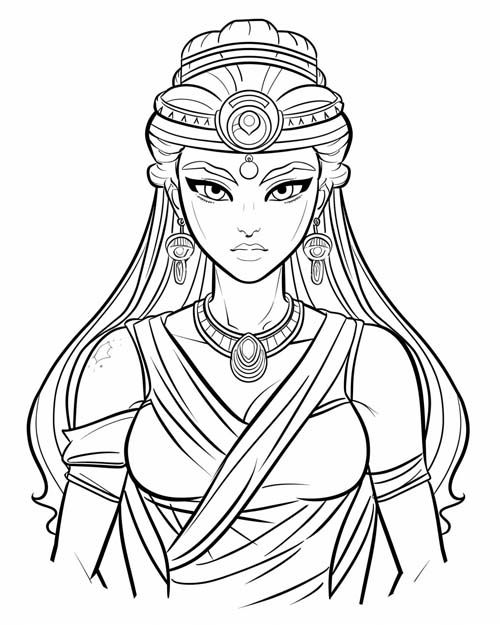Leanne's Printable Coloring Pages for Kids
Goddess Ishtar Mythology Coloring Pages
Welcome to our Goddess Ishtar Mythology Coloring Pages!
Ishtar was one of the most important goddesses in Mesopotamian mythology, worshiped for thousands of years in Eastern Asia, in ancient cities like Assyria, and Babylon. She was associated with love, beauty, and fertility, but also with war, justice, and power. As a complex figure, Ishtar represented both nurturing life and fierce strength, making her central to many myths and stories of the ancient Near East.
Oldest SuperstarIshtar was a goddess worshiped more than 4,000 years ago, long before Athena or Hera appeared in Greek myths and even before Isis became a central goddess in ancient Egypt!
A Goddess with Two Sides
Ishtar was both the goddess of love and the goddess of war, a rare combination that made her one of the most complex figures in Mesopotamian mythology.
She could bless romance and fertility one moment, inspiring joy and connection, and lead armies into battle the next, showing courage and power.
This dual nature reflected the Mesopotamians’ understanding that life could bring both creation and conflict, and that the same force could nurture or challenge depending on the moment.
The Eight-Pointed Star
Ishtar’s symbol was the eight-pointed star, which shone brightly in the night sky.
Ancient Mesopotamians saw this star as a sign of her presence and power, linking it to her roles as goddess of love, war, and the planet Venus.
The star symbol appeared on temples, jewelry, and carvings, reminding people that Ishtar watched over both the heavens and the earth, guiding heroes and influencing the fates of mortals.
Planet Power
Ishtar was linked to the planet Venus, which can often be seen shining brightly in the sky as both the morning star just before sunrise and the evening star just after sunset.
People in ancient Mesopotamia watched Venus closely and associated its bright, shifting appearance with Ishtar’s power, beauty, and influence over love, war, and the cycles of life.
Even today, if you look at the sky at dawn or dusk, you might catch the same bright “star” that inspired stories about this ancient goddess.
Rivalry Between Sisters
Ishtar's sister was Ereshkigal, queen of the Underworld and their stories show dramatic clashes between the worlds of life and death.
Ishtar and Giglamesh
In the Epic of Gilgamesh, Ishtar wanted the mighty hero to be her husband, but he turned her down!
And she was not pleased!
Bull of Heaven
In Mesopotamian mythology, Ishtar is famous for her boldness, even when it causes trouble. One story tells how she asked the god Anu to send down the Bull of Heaven after the hero Gilgamesh rejected her love.
The Bull brought storms and famine, shaking the earth with its power. But Gilgamesh and his friend Enkidu fought it bravely and defeated it.
Ishtar and Lions
Lions were sacred to Ishtar, symbolizing her fierce and powerful side as a goddess of war and strength.
Ishtar and Doves
Doves were also linked to Ishtar, representing her gentler, loving side as a goddess of love and beauty.
The Ishtar Gate
The famous Ishtar Gate in Babylon, covered in blue bricks and decorated with dragons and bulls, was named in her honor.
Songs for a Goddess
Priests and poets wrote hymns to Ishtar, praising her as “the bright torch of heaven” and “the mighty lady of battle.”
Ancient Influencer
The Mesopotamian goddess Ishtar's traits shaped other famous goddesses, like Aphrodite in Greece and Venus in Rome.
Ishtar’s stories belong to the world of ancient Mesopotamia, a region often called the “cradle of civilization.” She was already worshiped in the cities of Sumer and Akkad more than 4,000 years ago--long before the rise of classical Greece, and even earlier than many of the great temples and pyramids of ancient Egypt. This makes her one of the oldest goddesses whose name and character we still know today.
As a goddess of both love and war, her dual nature shows how ancient peoples understood the power of life to create and to destroy. Over time, her myths and symbols influenced other cultures, shaping later goddesses of the Mediterranean and Near East. Remembering Ishtar helps us see just how deep and interconnected the roots of mythology are, stretching back to some of humanity’s very first cities and stories.
